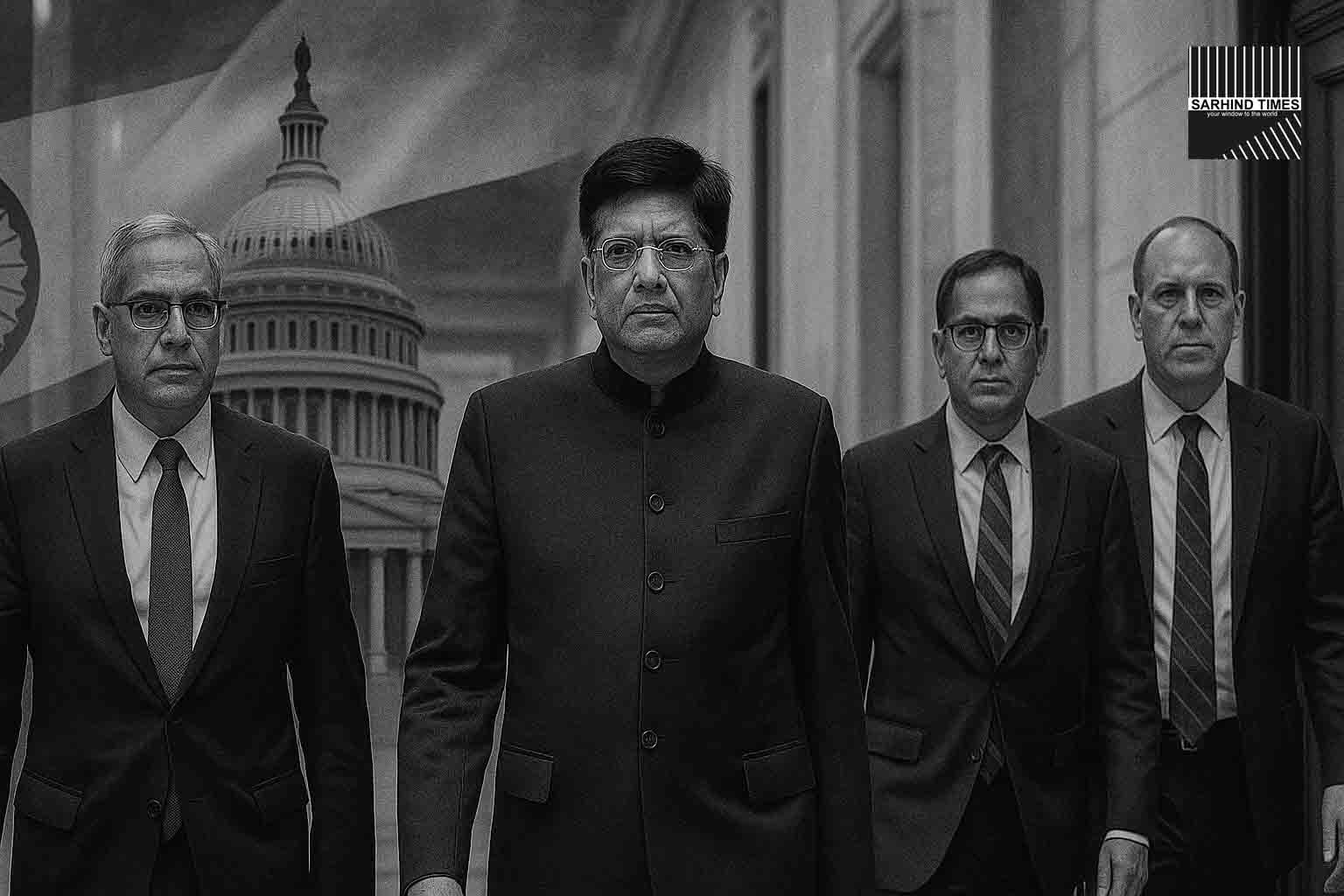India and the United States are set to intensify their trade negotiations as Commerce and Industry Minister Piyush Goyal begins a critical visit to Washington, D.C. The aim is to bridge longstanding gaps in a targeted trade package that has been under discussion for years.
The visit comes at a time of global economic realignment, where resilient supply chains, digital standards, and cross-border partnerships are becoming strategic imperatives. While both nations remain wary of unresolved differences, the renewed momentum signals a shared commitment to deepen economic ties, especially in light of rising geopolitical complexities.
A Trade Deal in the Waiting Room
The India–US trade relationship, valued at over $190 billion annually, is one of the fastest-growing economic partnerships. Yet, it has faced repeated hurdles:
- Tariff disputes on goods like steel, aluminum, and agricultural exports.
- Services mobility concerns, especially around IT professionals and H-1B visa-linked fees.
- Digital economy issues, with the US flagging data localization norms and India seeking predictable frameworks.
A “mini trade deal” was often discussed but never fully signed. Today’s renewed effort is framed less as a sweeping FTA (Free Trade Agreement) and more as a sectoral pact—practical, incremental, but impactful.
Why Now? The Timing of Renewed Talks
Several factors explain the renewed urgency:
- US elections cycle: Washington wants quick wins before domestic politics intensifies.
- India’s growth story: New Delhi’s rising global profile as a stable economy and manufacturing hub.
- China factor: Both countries seek to diversify supply chains away from Beijing.
- Immigration policy shifts: Higher visa fees in the US risk hurting Indian tech; India wants relief or predictability.
Minister Goyal’s trip thus comes not as routine diplomacy, but as part of a geopolitical strategy to cement India’s place in trusted trade corridors.
Key Areas of Discussion
a) Market Access
- India wants improved access for sectors like pharmaceuticals, textiles, and agricultural products.
- The US is pushing for dairy and farm exports, which face restrictions in India.
b) Tariff Irritants
- Disputes over steel, aluminum, and solar panels are expected to be revisited.
- India seeks restoration of GSP (Generalized System of Preferences) benefits suspended in 2019.
c) Services Mobility
- Central issue: predictable frameworks for Indian IT professionals.
- Rising H-1B fee structures are seen as discriminatory by Indian industry.
d) Digital & Standards Alignment
- The US wants India to relax data localization rules.
- India wants mutual recognition of digital and product standards to integrate more smoothly into supply chains.
Voices from Industry
- CII representative: “Even incremental gains matter—SMEs and startups rely on easier access to the US market.”
- Tech CEO: “The fee shock on visas must be addressed. Talent mobility is the backbone of this corridor.”
- US Chamber of Commerce: “Predictability on digital and standards is crucial for scaling trade beyond raw numbers.”
SMEs and Startups: Silent Winners?
While big-ticket trade disputes grab headlines, the most immediate beneficiaries of a compact could be small businesses and startups.
- Easier customs and lower tariffs reduce friction for exporters.
- Standards alignment helps Indian pharma, health tech, and electronics startups access the US market.
- Service mobility clarity allows Indian IT & AI startups to expand operations in the US.
Strategic Context: Beyond Economics
Trade talks today cannot be separated from geopolitics. India and the US are both part of the Quad grouping, are deepening defense ties, and coordinate on supply chain resilience for semiconductors and clean energy.
This trade deal is therefore more than commerce—it’s a strategic signal:
- India is willing to align more closely with the US-led economic architecture.
- The US is willing to recognize India as a critical partner in de-risking global trade flows.
Challenges Ahead
Despite optimism, significant hurdles remain:
- Domestic lobbies in both countries resist concessions (e.g., US dairy vs. Indian farmers).
- Political cycles may delay implementation.
- Digital sovereignty vs. open standards will be a contentious space.
Analysts expect an incremental deal by fall 2025, but warn against overpromising.
The Road Ahead
If even a modest compact is signed this fall, it could set the stage for:
- Revival of GSP benefits.
- Clearer frameworks for IT talent.
- Supply chain corridors linking India with North America.
Over time, this could expand into a broader FTA framework—but for now, the goal is a practical, fast-tracked deal.
Conclusion
Minister Piyush Goyal’s Washington visit is a test of pragmatism. India and the US know that trade disputes won’t vanish overnight, but they also know that inaction is no longer an option.
A limited deal now—focused on market access, mobility, and supply chains—could have an outsized impact on SMEs, startups, and the overall India–US strategic partnership.
The world will watch closely: can the two largest democracies translate their shared vision into shared prosperity?
#IndiaUS #TradeDeal #PiyushGoyal #Exports #SupplyChains #Geopolitics #SMEs #Startups






















+ There are no comments
Add yours